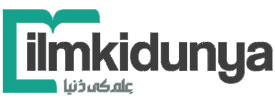-
 Home
Home
-
 News
News
Latest Educational News Stories
Daily update of all national, international news, picture stories, college / university announcements and educational events.
-
 Colleges
Colleges
Pakistan's Largest Database of Colleges and Universities
Explore Largest Directory of Private and Govt. Colleges, Universities and find best institute for your future Education.
-
 Courses
Courses
-
 Admission
Admission
-
 Lectures
Lectures
-
 Online Test
Online Test
Short Question
- 9th Class Physics Short Questions
- 9th Class Chemistry Short Questions
- 9th Class Math Short Questions
- 9th Class Biology Short Questions
- 9th Class Computer Short Questions
- 9th Class English Short Questions
- 10th Class Physics Short Question
- 10th Class Chemistry Short Question
- 10th Class Math Short Question
- 10th Class Biology Short Question
- 10th Class Computer Short Question
- 10th Class English Short Question
-
 Past Papers
Past Papers
-
 Date Sheets
Date Sheets
-
 Results
Results
Exam Results 2024
Check online Results 2024 Matric Inter BA BSc B.Com MA MSc M.Com CSS PCS MCAT ECAT of all educational boards and universities in Pakistan
-
 Study Abroad
Study Abroad
Study Abroad Programs and Opportunities for Pakistani Students
Explore free study abroad search to find programs, consultants, events to study in USA, UK, Australia, China, Malaysia and many others.
-
 Jobs
Jobs
-
 Tutors
Tutors
-
 More
More
-
 Apps
Apps
The Bhutan flag is a unique symbol of its culture and Buddhism tradition in the country. Moreover, it is considered one of the most vibrant and uniquely designed flags in the world. The bi-color flag featuring the snarling dragon and jewels in the claws represents the power and wealth of the nation. Like any other country, each color in the Bhutan flag has symbolic value and symbolizes the pride and unique identity of the country.
Country Information
- Country: Bhutan
- Continent: Asia
- Official Languages: Dzongkha
- Capital: Thimphu
- Government: Parliamentary System Unitary State Constitutional Monarchy
- Border length: 1,139 kilometers
Neighboring Countries of Bhutan
History Of Bhutan ?? "Unknown" Flag
The history of the National flag of Bhutan dates back to the Indo-Bhutan treaty in 1949 that was designed at the request of Second King Jigme Wangchuck. The flag featured a bi-color square design - a yellow & orange fimbriation running from the lower hoist to the upper flag end. Moreover, it has a green dragon parallelly facing the fly end. The first flag design was embroidered by one of the few lharips (painter) - Taw Taw from Pesiling, Bumthang. The green Dragon in the flag referred to the yu druk ngonm (turquoise dragon).

Second Version (1956)
During the royal tour of Late Majesty Jigme Dorji in 1956, the second version of the Bhutan flag featuring the white Dragon was introduced. It had the same bi-color design based on the first Bhutan flag design. The larger flag of size six square feet was hoisted on the camp.

Current Version of Bhutan Flag
In the late 1950s, the present version of the Bhutan flag was introduced during the visit of an Indian officer to Bhutan. It was redesigned in a rectangular shape and measured to the Indian flag ( nine by six feet).
The current Bhutan flag mainly featured the following changes.
- Dragon color was changed to white and embroidered diagonally to the fimbriation.
- Lower level color changed to orange at the request of the king.
- Shape changed from square to rectangular
The Dragon on the Bhutan flag was painted by Kilkhor Lopen Jada. So, the present Bhutan flag is a bi-color rectangular shaped flag diagonally divided into orange and yellow colors.

Color Of Bhutan ?? "Unknown" Flag
Bhutan flag mainly features two colors - Yellow and Orange. Moreover, the Dragon in the center of the flag is white in color.
The different color values in Hex, RGB, and CMYK are as follows.
| Color Type | Orange | Yellow | White |
|---|---|---|---|
| Hex | #FF4E12 | #FFD520 | #FFFFFF |
| RGB | (255, 78, 18) | (255, 213, 32) | (255, 255, 255) |
| CMYK | 0, 0.694, 0.929, 0 | 0, 0.164, 0.874, 0 | 0, 0, 0, 0 |
Symbolism of the Flag of Bhutan ?? "Unknown"
The national flag of Bhutan features yellow, orange, white, and Dragon and has its own meaning.
The yellow color in the Bhutan flag symbolizes the power and authority of the king ruling the state in the world. Additionally, it was taken from the traditional dress of the King of Bhutan, and it is also the official color of Bhutan.
The orange color represents the Buddhist group in Bhutan and the symbolism of Buddhist heritage. Thunder Dragon or The Druk is the Bhutanese national symbol. The flag of Bhutan features a Dragon with jeweled claws in the center, symbolizing the wealth and power of the state. Moreover, the Dragon’s snarling mouth symbolizes the commitment of the wrathful deities of Bhutan to protect the state. The white color of the Dragon represents the purity of different ethnic groups in a country. The fimbriation dividing the two colors and Dragon in the center also symbolizes the equality of civic and monarchy in Bhutan.
Bhutan Flag Download
-
 Free Bhutan Flag HD
Download HD
Free Bhutan Flag HD
Download HD
-
 Free Bhutan Flag Vector
Download Vector
Free Bhutan Flag Vector
Download Vector
-
 Free Bhutan Flag PDF
Download PDF
Free Bhutan Flag PDF
Download PDF
-
 Free Bhutan Flag Icon
Download Icon
Free Bhutan Flag Icon
Download Icon
-
 Free Bhutan Flag Emoji
Download Emoji
Free Bhutan Flag Emoji
Download Emoji
− What does the Dragon on the Bhutan flag represent?
The white-colored Dragon known as The Druk on the Bhutan flag represents the purity and loyalty of various ethnic and linguistic groups in Bhutan. Moreover, the Dragon’s claws hold jewels that represent the wealth of the state.
+ What is the name of the Dragon in the Bhutan flag?
+ Who designed the first version of the national flag of Bhutan?
+ What is the national emblem of Bhutan?
+ What are the colors of the Bhutan flag?
+ What is the proportion of the Bhutan flag?
+ What does the white-colored Dragon in the Bhutan flag represent?
+ What does the orange color in the Bhutan flag represent?
+ What does the half-masting Bhutan flag represent?
+ What is the variant flag of Bhutan?
Design and Size of Bhutan Flag
The yellow-orange-colored Bhutan flag should maintain a ratio of 3:2. However, some of the accepted dimensions are as follow
- 21 ft by 14 ft (6.4 meters by 4.3 meters)
- 12 ft by 8 ft (3.7 meters by 2.4 meters)
- 6 ft by 4 ft (1.8 meters by 1.2 meters)
- 3 ft by 2 ft (0.9 meters × 0.6 meters)
- 9 in by 6 in (23 centi-meters × 15 centi-meters)
The smallest size, i.e., 23 cm × 15 cm, is for the car flags.
Design of Bhutan Flag
The Bhutan flag is a bi-color flag that is divided into the upper and lower triangle. The upper triangle has a yellow color, whereas the bottom triangle has an orange color. The equal ratio of yellow and orange color shows the unity of people in Bhutan.
Different Variants of Bhutan Flag
The different variants of the Bhutan flag differ in the Dragon designed on the flag and are as follows.


Rules and Protocol to Hoist National Flag of Bhutan
As the flag is the national symbol of a nation and to pay respect, a complete code of conduct was passed on June 8, 1972, by the National Assembly. The rules and protocols to hoist the national flag of Bhutan are as follows.
- The national flag of Bhutan can not be used as a wrapper or cover.
- The Bhutan flag, when flown with other flags, should be hoisted higher than others.
- The flag can not be hoisted upside down.
- The flag can not be dragged on the ground or drenched in water.
- Respect and attention must be paid while hoisting the national flag of Bhutan.
- The large-sized flag can only be hoisted in the capital as well as in the places where the state’s heads and His Majesty go or reside.
- Small size flags can be hoisted on the vehicles, e.g., cars.
- The national flag of Bhutan in different sizes can be flown during important events in schools.
- It should be hoisted in any place during the National Day celebration.
- During the mourning, the flag of Bhutan should be hoisted at half-mast.
- His Majesty can hoist the flag on their residence.
- Government officials having ministerial scarves are allowed to hoist the national flag on their residence.
- A torn, worn-out, and defective flag can not be hoisted.
- The national flag of Bhutan must be kept and stored with safety and care.
- The national flag’s symbols can not be used as the business logo.
Facts About National Flag of Bhutan
Let’s dive into the interesting facts about the national flag of Bhutan
- The Bhutan flag was first introduced in 1949 during the Indo-Bhutan treaty.
- It is among the few flags that feature Dragon on the design.
- The Dragon on the Bhutan flag is called Druk (Thunder Dragon)
- The jewel held by the Dragon is known as Norbu
- Its design was proposed by Mayum Choying Wangmo Dorji
- The current and final version of the national flag of Bhutan was adopted in 1972.
- The Third King of Bhutan ordered the red color of the bottom triangle to change to orange.











